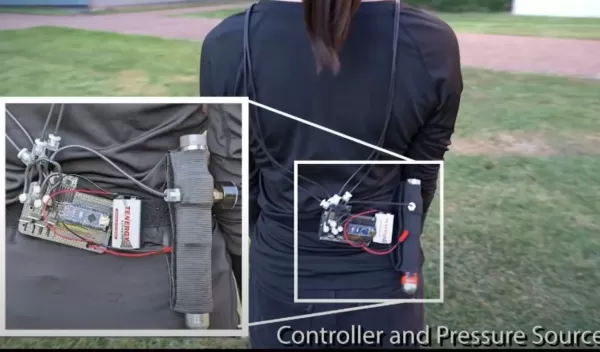
A lightweight wearable device helps users navigate with a tap on the wrist
Engineers at Rice University have developed a fabric-based wearable device that "taps" a user's wrist with pressurized air, helping them navigate to their destination. Users correctly interpreted which direction the device was telling them to go an average of 87% of the time. Since the wearable device embeds most of its control logic within the fabric itself by using air instead of electronics, it can be built lighter and more compact than existing designs.
A paper on the results is published in the journal Device. The work was funded in part by two U.S. National Science Foundation research grants; two of the investigators are NSF Graduate Research Fellows.
The device may benefit amputees who use prosthetic limbs, people with hearing loss, and surgeons, pilots and soldiers who are inundated with visual and auditory information.
"Haptics," or touch-based stimuli, which include hot or cold sensations or cues based on pressure applied to the skin, can offer an alternative to visual and auditory cues. Devices that use haptic cues are still uncommon, however, since they usually require bulky hardware that weighs down the wearer.
To overcome this obstacle, the researchers developed a light, comfortable wearable device from textile materials that can be worn on a user's arm.
After testing the performance of their haptic textile sleeves on human participants in a lab-based study, the researchers set out to see how well these devices could help users navigate in real-world scenarios. They integrated two of the sleeves into a shirt and completed the ensemble with a textile belt where they attached auxiliary components, making the device portable.
Next, an experimenter sent cues to users wearing the devices, directing them where to walk for one kilometer. In another navigation test, the participants again interpreted the cues with total accuracy, this time while riding an electric scooter over paved bricks, concrete sidewalks, and graveled paths. Watch the video of the tests in action.
"Further development will seek to improve the ability to convey even more complex cues that remain easily and naturally discerned by the user," said Daniel Preston, a mechanical engineer at Rice and the corresponding author of the study.
